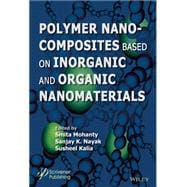This book covers all aspects of the different classes of nanomaterials – from synthesis to application. It investigates in detail the use and feasibility of developing nanocomposites with these nanomaterials as reinforcements. The book encompasses synthesis and properties of cellulose nanofibers, bacterial nanocellulose, carbon nanotubes / nanofibers, graphene, nanodiamonds, nanoclays, inorganic nanomaterials and their nanocomposites for high-end applications such as electronic devices, energy storage, structural and packaging. The book also provides insight into various modification techniques for improving the functionality of nanomaterials apart from their compatibility with the base matrix.








